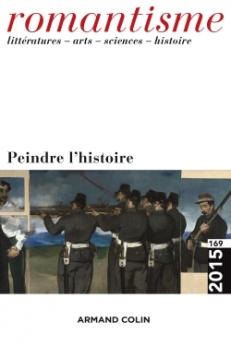
Romantisme n° 169 (3/2015)
Pour acheter ce numéro, contactez-nous
Recevez les numéros de l'année en cours et accédez à l'intégralité des articles en ligne.
L’Exposition universelle organisée à Paris en 1855 initie pour la première fois l’opportunité d’une confrontation des créations artistiques des différentes écoles nationales. Cet événement offre au public et à la critique la possibilité d’un bilan de l’évolution de la peinture d’histoire sur l’ensemble du continent et d’une réflexion sur son avenir. Ainsi, de nombreux auteurs proposent-ils leur analyse, qui toujours se rejoint dans le constat d’un triomphe général des formules du « genre historique ». Pourtant, le grand absent de l’événement est bien PaulDelaroche, celui dont l’influence est revendiquée par tous. Cet article vise à mettre en perspective ces considérations critiques, à un moment clé où le modèle du « genre historique » proposé par les artistes français s’impose tout en étant de plus en plus contesté.
The 1855 Paris Exhibition (Exposition universelle or Worlds’ Fair) gave the opportunity to stage for the first time a confrontation of art works from the different national schools. The event gave the public and the critics the possibility to assess the evolution of history painting across the whole continent and reflect upon its future. Thus a large number of authors produce their analysis, and all of them take stock of the general triumph of the formulas of genre historique. Yet Paul Delaroche, whose influence everyone claims, is the major absent at the event. This paper focuses on putting in perspective the opinions of the critics at a key moment when genre historique as the model genre, promulgated by the French, both imposes itself and is increasingly contested.

